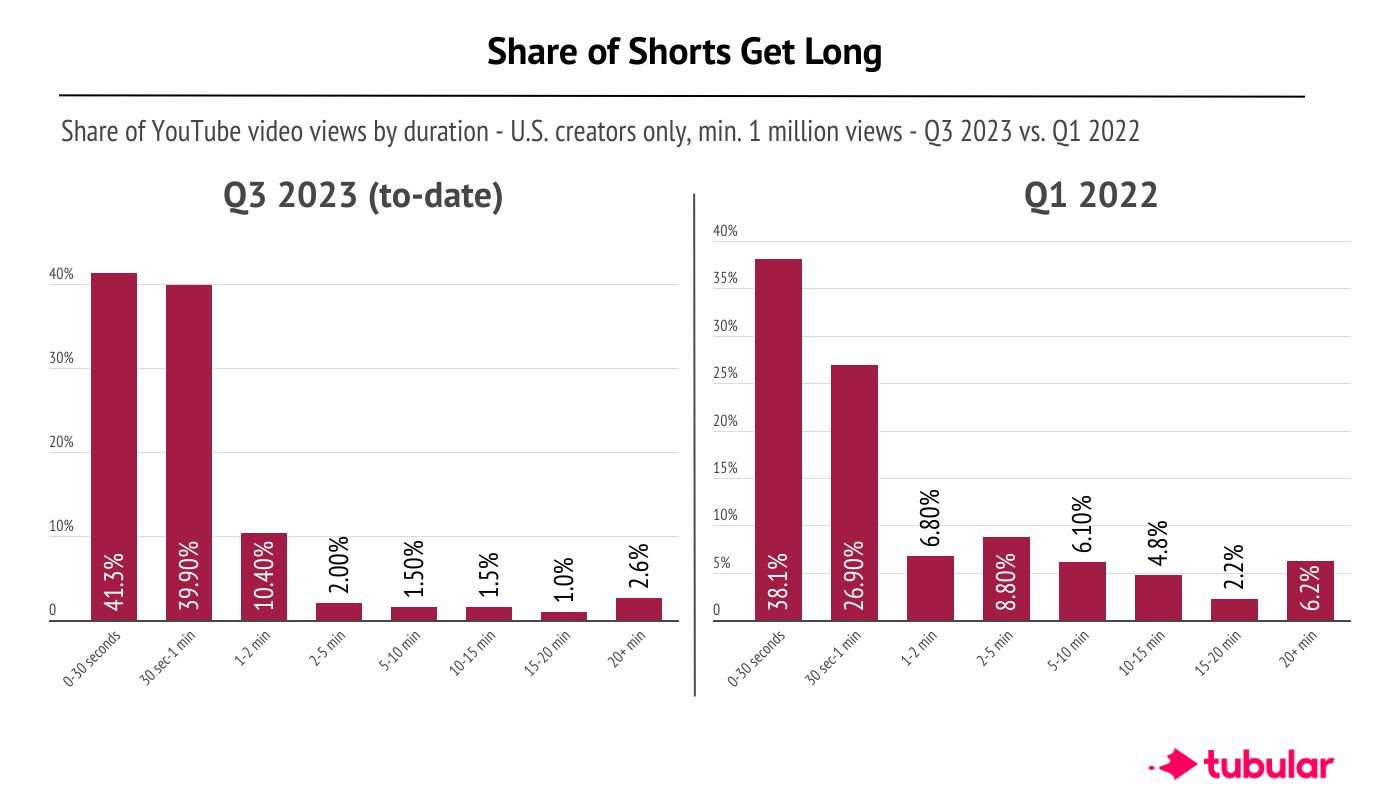Data: YouTube’s Getting Even Longer On Short Videos
While YouTube strategically leans on its new NFL Sunday Ticket deal to plot the future, its present is being increasingly shaped by less time-intensive fare.
Specifically, we’re talking about Shorts, and the growing emphasis on shorter videos both in terms of uploads and views — at least in in the U.S.
Data from Tubular Labs shows just how much YouTube’s most successful U.S. videos are leaning on shorter formats in recent quarters. For U.S. videos earning at least 1 million views, 0-1 minute videos have accounted for 74.3% of uploads so far in Q3 2023, and 81.2% of views. For uploads, that’s about even with Q2 (74.3% as well). But is up significantly compared to Q1 2023 (70.5%) and Q1 2022 (53.8%).
Increases for shorter-length videos weren’t limited to those under one minute either. Since Q1 2022, videos from 1-2 minutes in length steadily increased from 6.7% of uploads (of U.S. videos with at least 1 million views), to 10.0% so far this quarter. Similarly, share of views rose from 6.8% in Q1 2022 to 10.4% this quarter so far.
That means content ranging from 0-2 minutes in length makes up over 84% of uploads for YouTube’s most successful videos, and over 90% of views at this point. Meanwhile, videos from 2-20 minutes account for just 6% of views for videos with at least 1 million views (videos running over 20 minutes account for 2.6%).
Naturally, the next step is, so what?
For publishers, brands and individual creators alike, there’s an emphasis on shorter content given YouTube’s own dedicated sidebar showcase for shorts (while longer videos don’t have the same spotlight). There’s potential value in videos of 20 or more minutes given the increased monetization options there. But for the middle ground, the upside appears limited given trends dating back to the start of 2022, if not earlier.
This all mimics TV, in many respects, as social video continues to mature as a medium. Programming on TV usually falls into separate buckets of “lean-back” or “lean-forward” content, and you could make the case that on social video, short videos have become the former and the longest videos are the latter. There are exceptions, of course — certainly people use longer-cut videos to fall asleep or occupy kids, while shorts provide deep-dives into important topics, too. The larger points are there, though. And they’re not done being sorted out just yet.
As creators figure out which bucket they want to be in, though, it’s interesting to see how much the middle has been cut out. For those attempting to monetize social video, these sorts of insights can be informative around how to spend time and money. If you have 15 minutes of video you want to publish, perhaps it makes more sense as 15 shorts, or you find another five to six minutes to make it longer.
For advertisers, it’s worth watching how this shift continues to impact content creation, and where they fit in — be it through traditional ad buys (as is the case with longer-form videos) or through more unique content integrations.


